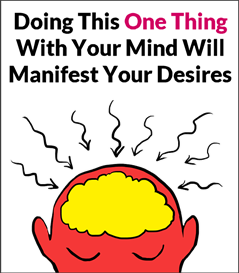 |
Creative Visualization
|
|
|
|
Psychologists’ Take On Mental Images
|

Experimental psychology has conducted tests and done much research on the process by which the human brain uses mental imagery
in cognition. Let’s take a quick look at some of them.
Zenon Pylyshyn, Roger Shepard and Jacqueline Metzler
Leading psychologist Zenon Pyshylyn proposed that the human mind processes mental images into numerical propositions like
a “serial computer”. However, Roger Shepard and Jacqueline Metzler argued that this is not the case. They justified their
case by showing to test subjects a two-dimensional line drawing of groups of three-dimensional (3D) block “objects” and questioning
them whether the “object” was the same as a second figure, some of which were merely rotations of the first “object”. The
pair claimed that if they decompose and mentally re-image the objects into numerical propositions, which was the widely accepted
and dominant view at that time, it should be expected that the time frame it took to figure out whether the object was the
same or not would be independent of how much the object was rotated. Instead, Shepard and Metzler discovered the opposite;
there was a linear or directly proportional relationship between the degree of rotation in the mental imagery exercise and
the time it took the respondents to reach their answer.
The significance of this result has a lasting implication. It means that the mind –and the human brain – manipulates images
as topographical and topological wholes. This was immediately put to the test by psychologists.
Stephen Kosslyn
In a series of neuroimaging experiments, Harvard University psychologist Stephen Kosslyn demonstrated that mental images
of objects, like the letter “F” are mapped, maintained and rotated as an image-like whole in areas pertaining to the human
visual cortex. Kosslyn and his colleagues also showed irrefutable similarities between the neural mappings for imagined
and perceived stimuli. They concluded that although the neural processes they studied rely on computational and mathematical
underpinnings, the human brain also seems optimized to handle the type of mathematics that consistently solves a series of
topologically-based images rather than analyzing a mathematical model of an object.
Micheal W. Parsons and John Shwoebel
“Human mental imagery is both visually and kinesthetically embodied.” This is what recent studies in neurology and neuropsychology
have found out regarding mental imagery. Several studies produced evidence that people are slower at rotating line illustrations
of objects such as hands in directions incompatible with the joints of the human body. This was the main idea of Micheal
W. Parsons’ research. It was supported by John Schwoebel, a scholar at the University of Pennsylvania, who corroborated that
patients with painful injured arms are slower at mentally rotating the drawings of the hand from the side of the injured arm.
The findings enumerated above, along with numerous related studies, have led to a widespread consensus within cognitive science,
neuroscience, psychology and philosophy on the neural status of these mental images. Agreeing that there is no homunculus
inside the head viewing the mental images, prominent researches also assert that it is the brain that is forming and maintaining
images as image-like wholes. On the other hand, the problem of how these images are stored and then manipulated by the human
brain is still unknown, hence, the field remains a fertile area of study.
The following chapter takes you to a higher level as it discusses creative visualization. Let’s proceed.
|

